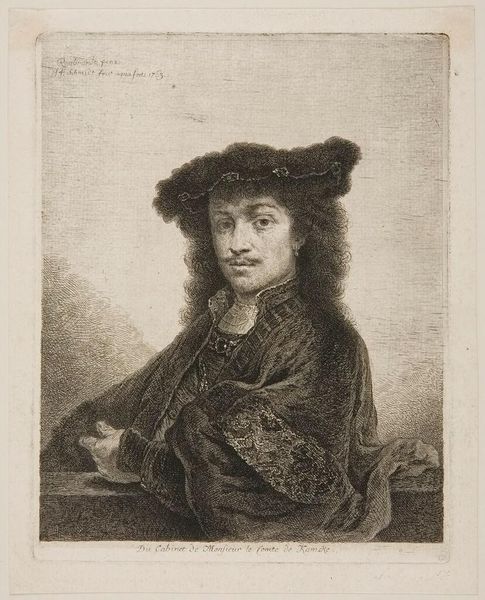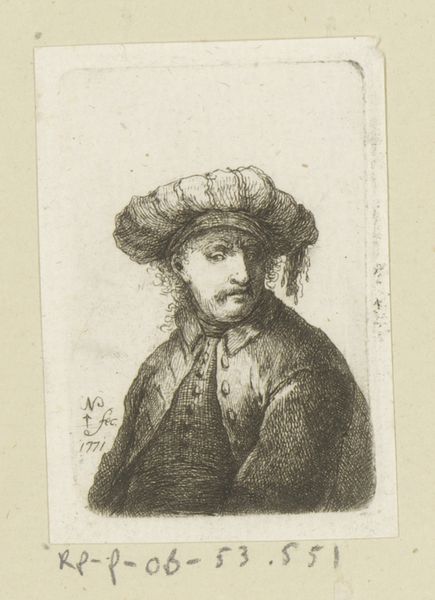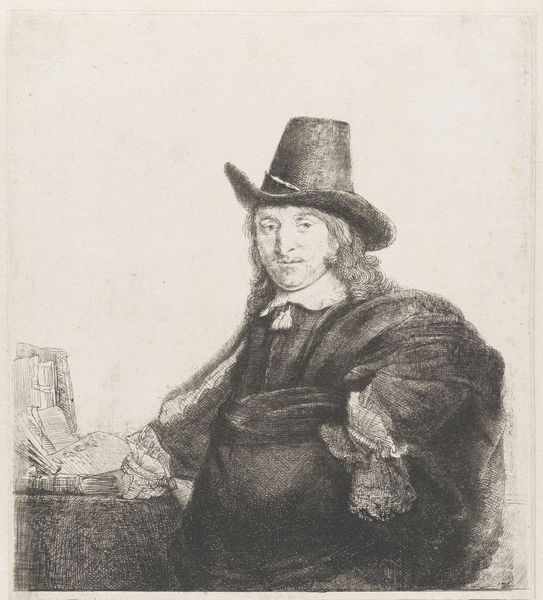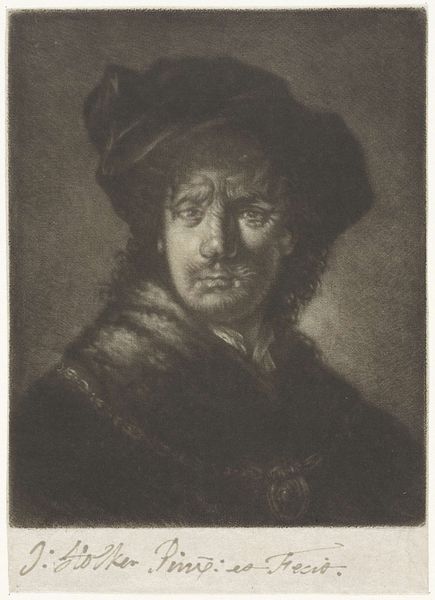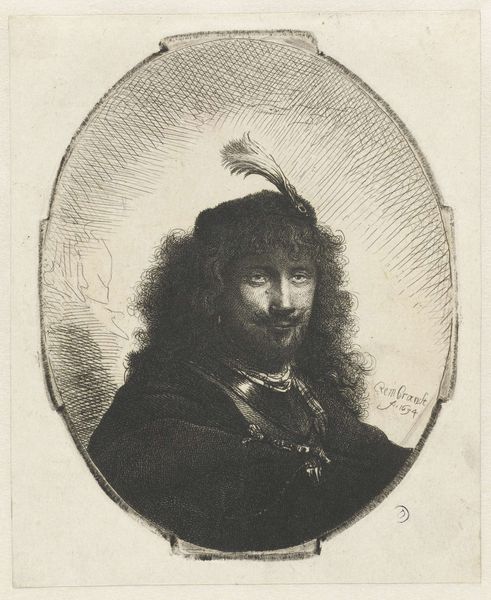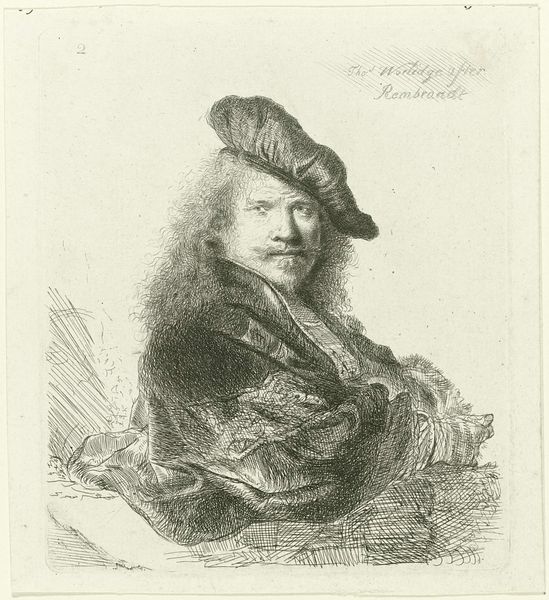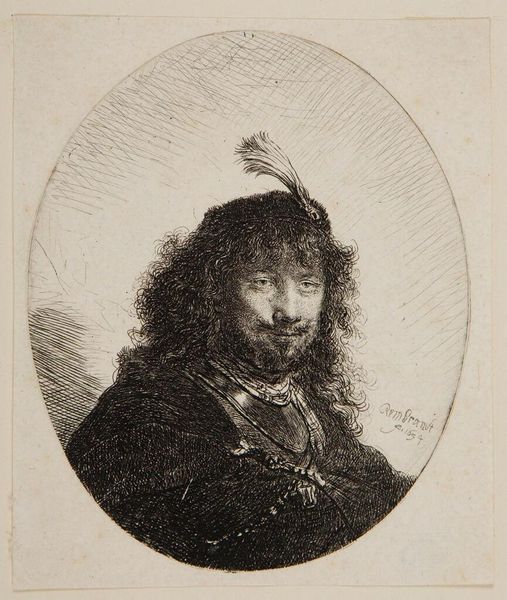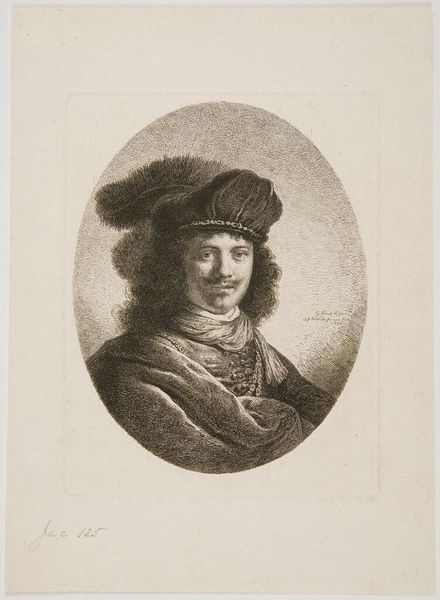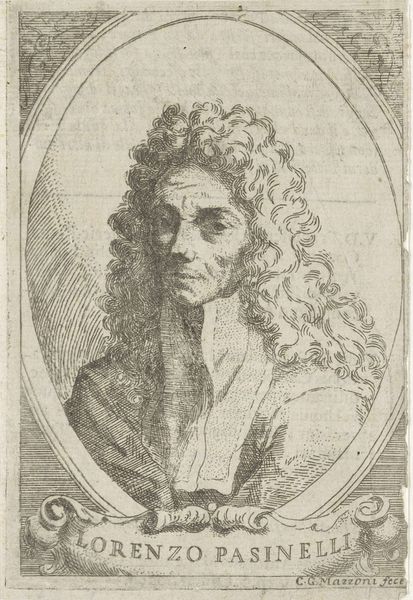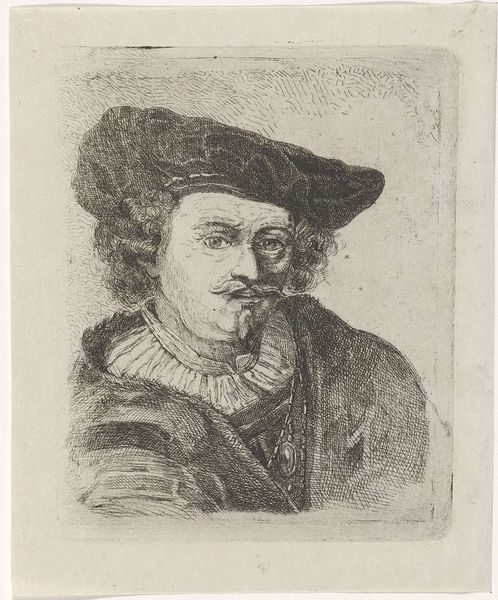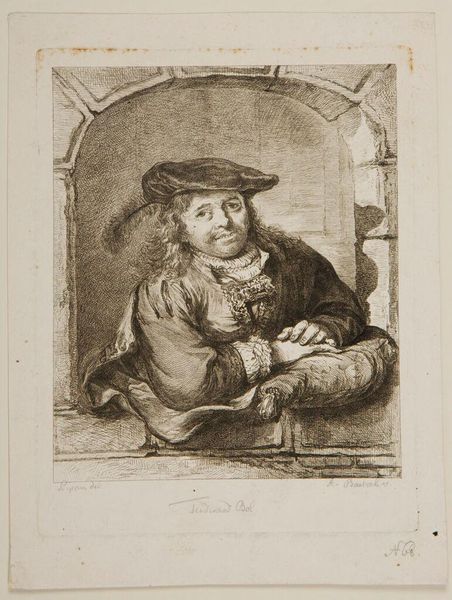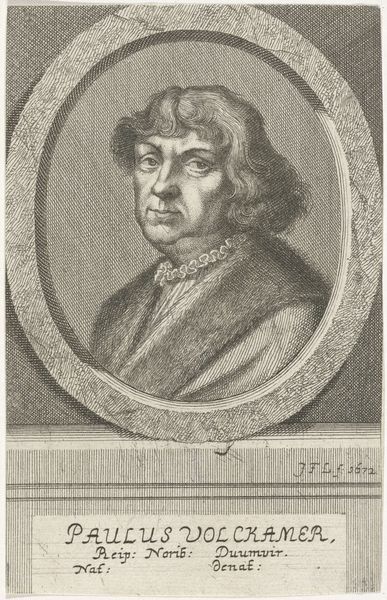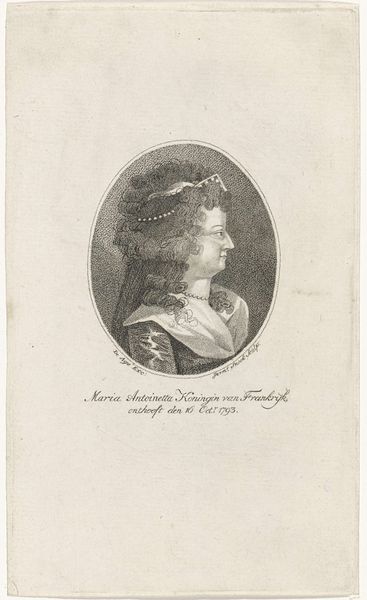
Dimensions: height 226 mm, width 156 mm
Copyright: Rijks Museum: Open Domain
William Bikker-Top made this etching, "Portret van een man," in 1823. The technique of etching involves coating a metal plate with a waxy ground, then drawing through the ground to expose the metal. The plate is then immersed in acid, which bites into the exposed lines. The material qualities of the metal plate allowed for incredibly fine details, which we can see in the man's elaborate costume and hair. The textures are created by varying the density and direction of the etched lines. It is worth considering that etching, as a form of printmaking, allowed for the reproduction and distribution of images, playing a role in the development of visual culture and commerce. Bikker-Top was clearly skilled in the use of etching tools, displaying a mastery of line and tone. The amount of labor involved in creating an etched plate speaks to the dedication required for this practice. Understanding the materials and processes involved helps us appreciate the craftsmanship inherent in the work.
Comments
No comments
Be the first to comment and join the conversation on the ultimate creative platform.
